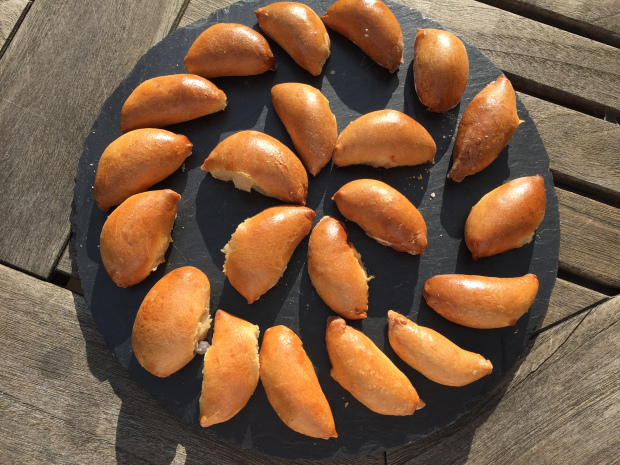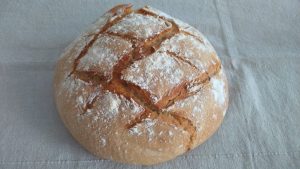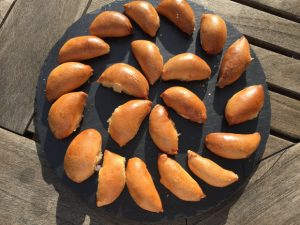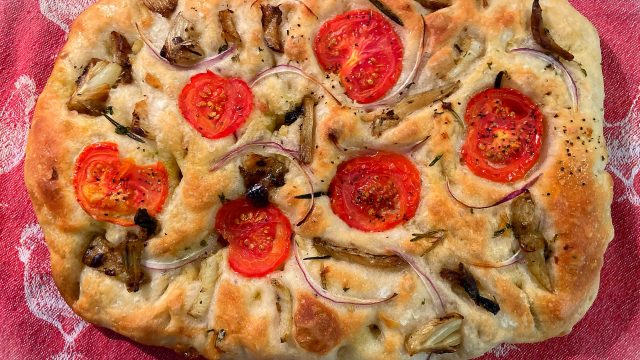
Tackling Little Buns
(AKA how to make piragi)

I will admit upfront that although we are now entering the second year of the pandemic, I have yet to bake sourdough bread. You may be asking, how will she even be able to talk about the pandemic in later years if she didn’t even nurture a sour dough starter?
The question will be akin to the age old question “if a tree falls in the forest, does anybody hear?’ The pandemic version with be, if you went through lock down and didn’t make sour dough bread, did you even really experience the pandemic? In my humble defense, allow me to say upfront that yes, I am ashamed. Also in my defense, I have cultivated a friendship with a neighbour who bakes sour dough bread and has run out of takers, something about people being concerned about the weight they’ve gained during Covid and trying to cut back on carbs?!

This past year’s yeast and the flour shortages did put me in a baking mood however. I decided that at long last I should finally learn how to make Latvian piragi. I am the only female in my extended family who has not made her own piragi, and I have always felt like an insufficient Latvian by not being able to make these delectable handheld buns. It may have something to do with the fact that they are intimidating to make, especially since my grandmother made the best piragi ever.

Other Latvians will say that their grandmother made the best piragi ever, but they are mistaken. My grandmother’s piragi were the best. It is an intimidating legacy to follow, especially since my grandmother was one of those cooks who didn’t measure ingredients or use a recipe and would snap,” you know when it feels right”, as if this is something that everyone should know when handling dough for the first time.

It is also intimidating when my family is filled with amazing cooks. They have no qualms about carving baby carriages out of watermelons and filling with fruit salad for baby showers (I saw it, I was there!), or making elaborate puff pastry domes for book clubs. I, on the other hand, still regularly overcook my Kraft dinner.
Needless to say, it was a daunting task.
Here is the procedure if you are feeling brave and want to expand beyond sourdough loaves:
Making the Piragi Dough
- 1. In a small bowl, mix 2 tsp. sugar with 1/2 cup warm water, sprinkle 2 envelopes dry yeast on top.
- 2. Set aside for 10 minutes in a warm place until yeast bubbles and doubles in size.
- 3. Scald 2 cups whole milk and place in large bowl. Add 2 tbsp. sugar, 2 tbsp. salt ad 1/2 cup oil and stir.
- 4. In a separate bowl mix 2 eggs, slightly beaten, with 1/2 cup sour cream.
- 5. When milk is cooled to lukewarm, add egg mixture, yeast, and two cups flour. Mix thoroughly with wooden spoon.
- 6. Add up to another 4 cups of flour and continue to stir until the dough starts to leave the sides of the bowl. The dough will be stiff but still sticky.
- 7. Throw dough onto floured pastry board or counter. Add enough flour that the dough won’t stick to your hands. Knead dough with heels of hands for 5-10 minutes. Slap the ball of dough on the board a few times to release personal tension.
- 8. Place ball of dough in a greased bowl, grease the top of the dough and cover with plastic wrap. Place in a warm spot to rise, about 1-11/2 hours, until dough is doubled in size. While waiting for the dough to rise, make piragi filling (Procedure B)
Making the Piragi Filling
- 1. Finely dice 2 pounds of slab bacon
- 2. Finely dice 1 medium onion
- 3. In a hot pan stir fry onions and bacon for 5 minutes
- 4. Add lots of black pepper to taste
- 5. Place mixture in sieve to drain any excess moisture and fat.
- 6. Pat mixture with paper towels to further remove excess fat.
- 7. Let cool. Mixture can be placed in fridge to speed up cooling process if necessary.
*Note* If you are a vegetarian, you can experiment with other fillings, like chopped mushrooms and onions, or veggie bacon. Just know that your piragi will probably be shunned, left untouched by mocking Latvians. A piragi pariah as it were…
Folding the Piragi
- 1. With floured hands, pinch off a 1 inch piece of dough.
- 2. Roll and pat the dough in the palm of your hands until it is a flat, round disc about 2 1/2 inches in diameter.
- 3. Place 1 tsp. of filling in center of dough. It is important that the filling is drained of excess fat and cooled, and that you don’t over stuff the piragi. Any of these factors can cause the piragito split open when baking, leading to the dreaded “smiling piragi“. Don’t be fooled by the pleasant sounding image of a smiling piragi. This piragiis a failure and it will be judged ( see above, re: vegetarian piragi)
- 4. Fold the disc in half to form a half moon shape around the filling.
- 5. Using your fingertips, carefully pinch along the edge of the half moon to seal the filling in the dough to create an enclosed bun.
- 6. Carefully place the bun, seam side down, on a parchment lined cookie sheet.
- 7. Brush the top of the bun with goose fat or a beaten egg so that the bun will look shiny after baking.
Baking the Piragi
- 1. Bake tray of piragiin a pre-heated 400-degree oven for 12-15 minutes until golden brown.
Serving the Piragi
- 1. Place warm piragi on a platter or in a large bowl, preferably one with a Latvian design. Cover with a clean towel,(Like maybe a lovely one by Lapin Blond?!)
- 2. Offer piragito Latvian relatives who will sigh sadly that they do not taste anything like their grandmother’s piragi.

Photo Credits to:
Tania Delosbosques
Alyson McFee
Klaus Nielsen













